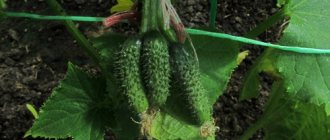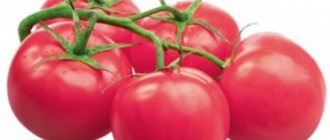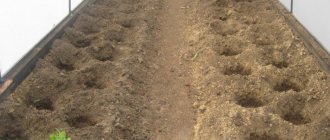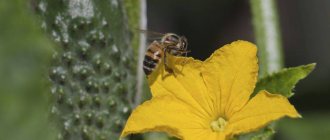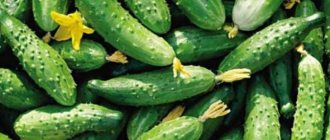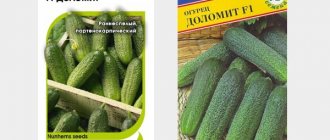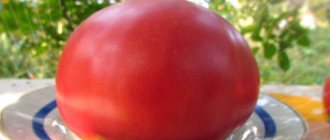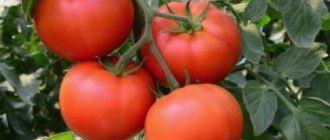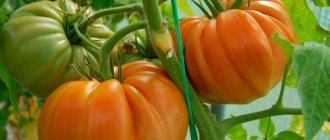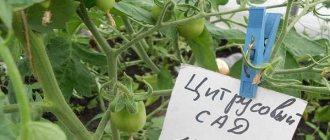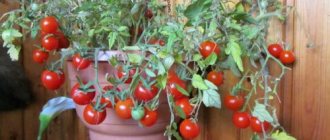» Vegetable growing » Cucumbers » Growing cucumber Vyatsky f1
0
1393
Article rating
Vyatsky cucumber f1 was created for an area with infertile land. Preliminary experiments were carried out, during which the hybrid showed its best side: the yield remained at an excellent level, and the fruits themselves did not lose their taste.
- Care
- Reviews from gardeners
Growing cucumber Vyatsky f1
Description and characteristics of the variety
The bushes form medium-sized shoots with moderate branching. Ripening occurs early - after 38-40 days from germination. Among the characteristics:
- bunched ovaries;
- 1 node contains 1-2 female flowers.
Greens are used universally - in pickling or salad dishes.
Features of the fruit:
- length 10-14 cm;
- diameter about 4 cm;
- tubular shape;
- weight 100-140 g;
- color bright green;
- the flesh is crispy and juicy;
- the taste is sweetish, without bitterness.
The hybrid is intended for cultivation in garden plots, under films, at home on balconies and warm windows.
Resistance to diseases and pests
Hybrid varieties are among the most resistant to many viral and bacterial diseases. The Vyatka cucumber has a strong immunity to:
- cucumber mosaic;
- powdery mildew;
- downy mildew;
- olive spot;
- root rot.
The variety has already been bred to be resistant to these unpleasant cucumber diseases. However, this does not mean that disinfection procedures should be neglected. There are several diseases that can harm this variety:
- bacteriosis;
- gray rot;
- root rot.
To prevent these diseases, it is recommended to carry out preventive treatment of seeds and sowings with Previkur. It protects the seeds from germs and prevents the spread of bacteria. If symptoms of any disease are detected, preventive treatment must be carried out immediately. It involves adding various useful folk remedies to the root. Onion peels, milk with honey, ash, and potassium permanganate work well. The operating principle of all these plants is identical: disinfection and protection of the delicate root system of a young cucumber.
Attention!
Pests are several times more dangerous for the variety than diseases. Whiteflies and aphids are especially dangerous for young, immature cucumbers.
To combat such insects, insecticidal preparations or folk remedies are used. The best insecticides:
- Trichodermin;
- Belt;
- Calypso.
All of them destroy adult larvae and small embryos. The advantages of such tools are their versatility. They can be used at different stages of insect development. However, it is necessary to constantly inspect the plants in order to promptly determine the presence of certain insects or their embryos.
In general, the Vyatka variety is able to adapt to absolutely any conditions. If you properly care for the plant, water it and loosen it in a timely manner, unfavorable conditions will not threaten the bush in any way.
Description of fruits
With the right growing technology, the first fruits can be harvested in June.
They have an elongated, oblong shape, with tubercles characteristic of this type of vegetable. The average length of the fruit is about 12 centimeters, and its weight is 125 grams. The pulp is uniform, sufficiently dense and does not contain empty zones. The peel is not bitter and does not turn yellow. Vyatsky F 1 cucumbers can be stored for a long time or transported over long distances. At the same time, vegetables retain their appearance and do not lose their taste. They are good for salads, but they cannot be preserved.
Reviews
Cucumbers of the Vyatsky F1 variety are perfect for both fresh consumption and canning. Effectively used as a crop for growing in summer cottages.
Svetlana, 42 years old
I like to experiment and grow different varieties in my greenhouse. This year I decided to try the Vyatsky variety. I planted seedlings on the windowsill. Of the 15 seeds, three did not germinate. Before the May holidays, I transplanted the seedlings into a greenhouse. Cucumbers survived the cold and rainy summer much better than other varieties. It was necessary to look after and feed, but every 2-3 days there was a stable harvest.
Maria, 33 years old
I have been growing this variety for several years now. All summer long there are delicious, crispy, fresh cucumbers on the table. They are also great for canning and pickling. You need to preserve whole cucumbers. If you cut them, they become watery and not as crispy.
Olga, 44 years old
I was without cucumbers for 5 years. This year we bought another greenhouse. They planted tomatoes in the new one, and 1 bed of peppers and 2 cucumbers in the old one. In total there were 3 rows of 6 m each. We ate to our fill. The last remnants were already filmed in October.
Vyatsky F1 cucumbers help cleanse the intestines and remove excess fluid from the body. Due to their hypoallergenic properties, they are allowed in any diet. Helps with problems with constipation and cystitis. Designed for cultivation both outdoors and indoors in the central European part of Russia; they love a moderate continental climate.
Photo
In the photo you can see the Vyatsky cucumber. Vyatsky f1 cucumbers have a very interesting appearance. The main advantage of the hybrid is considered to be very high yield. The purpose of the fruit is salad, and these cucumbers are not suitable for pickling and canning. At the end of August, when grown in open ground, plants stop growing and bearing fruit due to a decrease in temperature characteristics and cold morning dew.
Video
You can also watch a video where an experienced gardener will tell you about the easiest way to grow a “Vyatsky f1” cucumber in a greenhouse.
According to reviews from gardeners, cucumbers of this type form quite large vines, in areas of which small and very appetizing greens hang. They grow very quickly, ripen in advance, fill out equally and get a little sick. The only disadvantage is the rather significant cost of seed material, but this is offset by the excellent features of the resulting crop.
Features of agricultural technology of the variety
Vyatka cucumber can be planted directly into open ground using seeds. No preliminary preparation of seedlings is required. At the first stage, it is necessary to select high-quality planting material. It may turn out to be weak or empty, and then the bush will not bear fruit. To test the seeds, they are soaked in a saline solution. Two tablespoons of table salt or one sea salt are diluted in a liter of water. The seeds are placed in this solution for a short time. Those that have settled to the bottom are suitable for planting; the seeds that float to the surface are empty and useless. Then the seeds must:
- warm up in the sun;
- disinfected in a solution of potassium permanganate.
Later they are placed in a wet cloth for 3-4 days for germination. The fabric must be constantly moistened. The seeds are suitable for planting in open ground from the moment the first leaves appear. If the soil temperature does not drop below 10 °C within one week, then the seeds can be safely planted outside or in a greenhouse.
It is recommended to choose a well-lit place, at the same time protected from drafts. The soil must first be loosened, thoroughly cleaned of last year’s plantings and debris in the fall, and fertilized. 30 minutes before sowing, thoroughly moisten the soil with warm water.
Sowing scheme:
- holes 4 cm deep;
- at a distance of 35-45 cm from each other.
You may be interested in: The best varieties of cucumbers for 2021 for the Moscow region Favorable days for transplanting cucumbers in open ground Dates for planting cucumbers in May 2021 according to the lunar calendar
Carefully place the sprouted seeds in each hole and carefully fill with warm water. Lightly sprinkle some soil on top. The next watering is carried out no earlier than 3 days after planting. Vyatsky cucumber f1 has individual growing characteristics:
- Weeding must be done frequently as weeds appear. The Vyatka variety requires constant access of oxygen to the roots, which is blocked if weeds appear. Timely weeding also prevents the development of certain viral diseases. Weeding also eliminates pests that carry viruses.
- Moderate watering. Although they usually say that it is better to over-water cucumbers than to under-water them, the situation with Vyatsky is a little different. Watering should be moderate, once every three days. Use only warm water and apply directly to the root. It is better to water in the morning or evening when the sun is less active. During periods of flowering and active fruit ripening, the water supply is increased to once a day.
- Timely additional feeding. When there is a period of active flowering or the first fruits are formed, the plant requires a lot of strength. Adding additional fertilizers enriches the plant and gives it strength. At the flowering stage, cucumbers require more nitrogen, and at the time of formation of young fruits, more natural fertilizers, ideally if it is manure or urea.
- Garter. This is an important stage. It facilitates the development of stems and shoots and protects stems from breakage. For gartering, vertical trellises are prepared in advance. They are tightly screwed into the ground and as the bushes grow, they are tied up.
- Loosening the soil. Oxygen and sunlight pass through dense soil less easily, so it must be loosened.
Attention!
The tender young roots of Vyatka F1 are located very close to the ground. To avoid damaging them, you need to work with a hoe very carefully.
Vyatka cucumber stores well. It is enough to place it in a dry room and protect it from other vegetables and fruits. In the refrigerator, such a cucumber can also retain its taste and color for a long time. To do this, it is placed in ice water. The fluid must be changed every two days.
Cucumber varieties by growth type
According to the type of growth, cucumbers are divided into bush, short-stemmed, medium-stemmed and long-stemmed.
In bush varieties of cucumbers, the vines do not reach a length of more than 50 cm, in short-climbing cucumbers - 80 cm, they are characterized by weak branching (no more than two second-order vines). The yield of this group of cucumbers is average, the yield of fruits is friendly (for three weeks), the ripening period is early. It is used for open ground and for film shelters.
Long-climbing varieties of cucumbers are characterized by a later entry into fruiting, an extended period of fruiting and greater resistance to stress and disease. They are grown both in open and closed ground. The lashes of these varieties of cucumbers reach a length of up to 3 m.
| Name of variety/hybrid | Bush | Short-climbing | Medium-climbing | long-climbing |
| Abbad | + | |||
| Vanguard | + | |||
| Advance F1 | + | |||
| Alligator F1 | ||||
| April F1 | ||||
| Balcony F1 | ||||
| Minion F1 | ||||
| Borisych F1 | ||||
| Barrel F1 | ||||
| True friends F1 | ||||
| Funny guys F1 | ||||
| Vitan | ||||
| Vladivostok-sky 155 | + | |||
| Aquarius | + | |||
| Waterfall | ||||
| Volgodonskaya 231 | + | |||
| Voronezh | ||||
| East | ||||
| Vyaznikovsky 37 | + | |||
| Vyazovets | ||||
| Geisha F1 | ||||
| Hercules F1 | ||||
| Hotel F1 | ||||
| Far Eastern 27 | + | |||
| F1 debut | + | |||
| Dean | + | |||
| Friendly family F1 | ||||
| Unity | ||||
| Snack bar | ||||
| Pickling | + | |||
| Zozulya F1 | ||||
| Zyatek F1 | ||||
| Abundant F1 | ||||
| Elegant | + | |||
| Katyusha F1 | + | |||
| Kashmir F1 | ||||
| Quartet F1 | + | |||
| Competitor | + | |||
| Shorty | + | |||
| Krakow F1 | ||||
| Fastener F1 | ||||
| Magician | + | |||
| Courage F1 | + | |||
| Bush | + | |||
| F1 leader | + | |||
| Lilliputian F1 | ||||
| Lotus | + | |||
| Lohengrin F1 | ||||
| Lukoshko F1 | + | |||
| Baby | + | |||
| Baby | + | |||
| Boy with Thumb F1 | + | |||
| Mommy's favorite F1 | ||||
| Manila F1 | ||||
| Marawa F1 | ||||
| Masha F1 | + | |||
| Miser F1 | ||||
| Micron | ||||
| Monastic | + | |||
| Moscow dude F1 | + | |||
| Hope | + | |||
| Nezhinsky | ||||
| Odessa F1 | ||||
| Pavlik F1 | + | |||
| Robin Hood F1 | + | |||
| Russian style F1 | + | |||
| Northern Lights F1 | ||||
| North Pole F1 | ||||
| Seryozha F1 | ||||
| Siberian F1 | ||||
| Solar | + | |||
| Madam | + | |||
| Toropyzhka F1 | + | |||
| Tristan F1 | ||||
| Faris | ||||
| Phoenix | + | |||
| Phillipok F1 | + | |||
| Frigate F1 | ||||
| Swag | ||||
| Crispy Alligator F1 | + | |||
| Miracle Khrustik F1 | ||||
| Shaolin F1 | ||||
| Espagnolette F1 | ||||
| Dapper F1 | ||||
| Nutcracker F1 | ||||
| HWY 406 F1 | ||||
| F1 crew | ||||
| Eliza F1 | ||||
| Erica F1 | ||||
| Eskimo F1 | ||||
| Effect F1 | + | |||
| Juventa F1 | ||||
| Julian F1 | ||||
| Yurik F1 | + | |||
| Fair F1 | + |
What is a Vyatsky cucumber?
Next, a description of the variety will be considered. The culture was developed relatively recently - in 2015. In a short period of time, she managed to receive positive feedback from vegetable growers.
Vyatsky f1 belongs to the parthenocarpic hybrids of the female flowering type. The designation “parthenocarpic hybrid” indicates that the variety produces its fruits without pollination. The plant is convenient to grow in greenhouses, where there are practically no insects.
Parthenocarpic cucumbers have a number of advantages, including:
- fruits without bitterness;
- fast growth;
- long fruiting;
- the fact that they do not require pollination by insects;
- smooth fruit shape.
Vegetable growers love Vyatich for its super-earliness. The first harvest ripens within a month after the seedlings emerge. The ovaries are fasciculate. The culture is not fussy about the care and quality of the soil. The variety is immune to many common diseases. You can grow cucumbers in open and closed ground.
The hybrid easily tolerates short-term drought, rain, cool summers, and sudden temperature changes. There are no regional restrictions. Cucumber grows well in temperate climate zones. Seeds are sold in different countries.
How is the variety grown?
Despite the fact that the cucumber is a strong hybrid, it needs to follow planting rules.
Seedlings are planted in April. Cucumbers grow very quickly. In a few weeks, green thickets will appear on the soil where the seeds were sown.
Seeds need to be checked for germination and weak seeds removed. A saline solution is prepared into which the seed is soaked. Empty seeds will float to the surface. We need to get rid of them.
Then the seeds are placed in prepared soil with sawdust. Seedlings need to be provided with comfortable conditions. They should receive enough light, moisture, and be warm. If all these conditions are met, the plants will have thick stems and powerful leaves.
It is best to plant seedlings in the garden after 4-6 leaves appear. The earth should be warmed up to 10°C. Experienced vegetable growers advise planting cucumbers on fertilized soil in which cabbage, potatoes or beans previously grew.
Vyatka cucumbers love the sunny side of the site, where there are a minimum number of drafts. Planting scheme: 1 plant per 50 cm of soil. This variety allows seeds to be planted directly in open ground. To do this, you need to prepare the ground. It should be dug up and fed in the fall. All roots should be removed from the ground.
It is better to plant seeds in May, when the ground has warmed up to 13°C. Vyatsky is not afraid of temperature changes, but the sprouts that just appear need to be insulated. To do this, cover the cucumber bed with film or agrofibre.
Vyatka cucumbers love the sunny side of the site, where there are a minimum number of drafts. Planting scheme: 1 plant per 50 cm of soil. This variety allows seeds to be planted directly in open ground. To do this, you need to prepare the ground. It should be dug up and fed in the fall. All roots should be removed from the ground.
Care
Vyatka cucumbers have their own growing characteristics.
- To get a large harvest, it is necessary to ensure timely weeding.
- At the ripening stage, additional feeding is necessary. Humus, dry ash or chicken droppings are suitable for this.
- They also need moderate watering with warm water once every 3 days. During the period of color formation and ripening, watering is carried out every day or every other day.
The culture does not like hardened soil. It is necessary to periodically loosen the soil without disturbing the root system.
During the growing season, fertilizing is recommended. A yeast mixture is suitable for this: dissolve 1 pack of yeast in 10 liters of water and leave to brew for 3 days. This fertilizer can be used to treat the crop.
